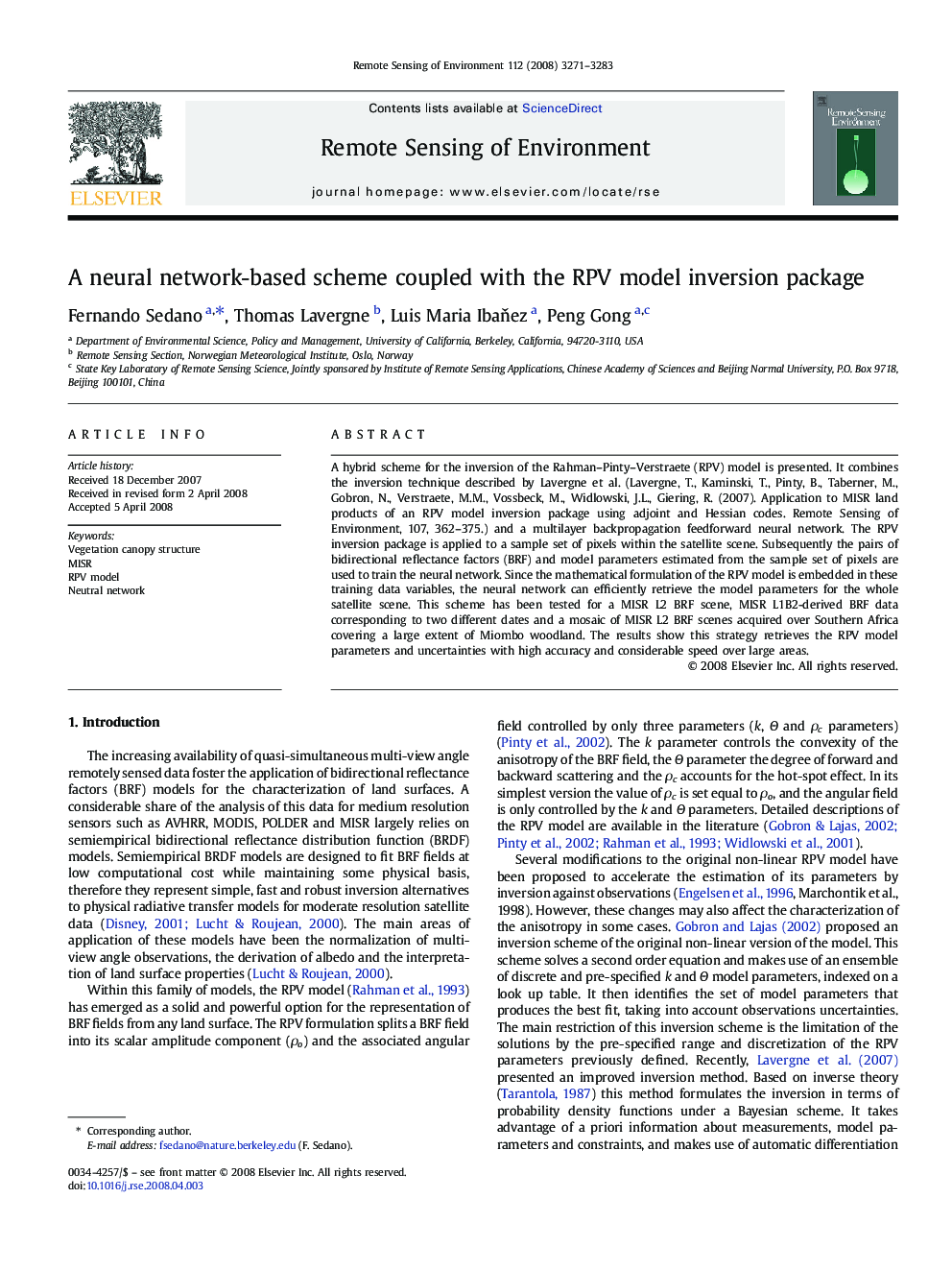| Article ID | Journal | Published Year | Pages | File Type |
|---|---|---|---|---|
| 4460142 | Remote Sensing of Environment | 2008 | 13 Pages |
A hybrid scheme for the inversion of the Rahman–Pinty–Verstraete (RPV) model is presented. It combines the inversion technique described by Lavergne et al. (Lavergne, T., Kaminski, T., Pinty, B., Taberner, M., Gobron, N., Verstraete, M.M., Vossbeck, M., Widlowski, J.L., Giering, R. (2007). Application to MISR land products of an RPV model inversion package using adjoint and Hessian codes. Remote Sensing of Environment, 107, 362–375.) and a multilayer backpropagation feedforward neural network. The RPV inversion package is applied to a sample set of pixels within the satellite scene. Subsequently the pairs of bidirectional reflectance factors (BRF) and model parameters estimated from the sample set of pixels are used to train the neural network. Since the mathematical formulation of the RPV model is embedded in these training data variables, the neural network can efficiently retrieve the model parameters for the whole satellite scene. This scheme has been tested for a MISR L2 BRF scene, MISR L1B2-derived BRF data corresponding to two different dates and a mosaic of MISR L2 BRF scenes acquired over Southern Africa covering a large extent of Miombo woodland. The results show this strategy retrieves the RPV model parameters and uncertainties with high accuracy and considerable speed over large areas.
